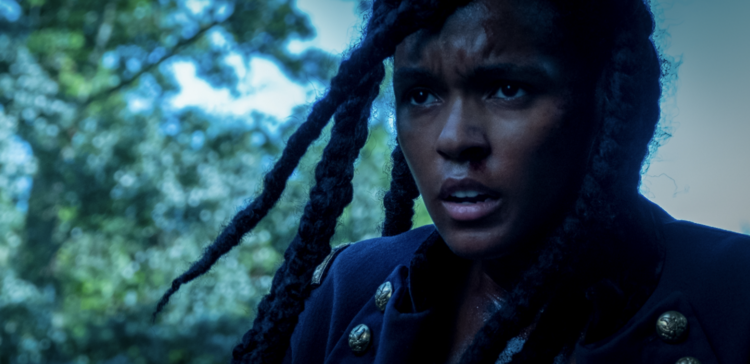Vampires, phantoms and dolls that come to monstrous life scare audiences in their own right, but these are images that we can be fairly confident aren’t lurking around the hallway past our kitchens at night. But films chronicling evils that could happen to us, or that do happen to other people—these are the films that send shock through the mind and body in an entirely realistic sort of dread. The new film “Antebellum” is a horror film so blood-curdling and effective because it is entirely, horrifyingly possible. Not only that, it is history inasmuch as it reveals that the past—as Faulkner’s quote that repeatedly appears in the film says—“is never dead. It’s not even past.”
A Confederate family kidnaps the film’s Black protagonist, Veronica Henley, a modern-day sociologist and New York Times bestselling author played by Janelle Monáe—and enslaves her in the “past.” They take her to what appears to be the middle of the Civil War and force her, along with the others who were also abducted, to live as a slave on their Louisiana plantation. They profit from the cotton she picks; they rape and brand her; they force her to call herself by another name. No Black person on the plantation is allowed to speak unless a white person gives permission. It is all, as slavery and racism inherently are, a horror of horrors.
But here is where the film twists. It is not a story about the antebellum period long ago. There is no time travel involved. These Confederates have cell phones, and a commercial airplane leaves a contrail through the sky. Gerard Bush and Christopher Renz’s “Antebellum” is about today.
The new film “Antebellum” is a horror film so blood-curdling and effective because it is entirely, horrifyingly possible.
The film is distinctly Black horror, and it is also American horror. It is the kind of fiction that is more true than many two-dimensional, fact-based accounts of reality. In Xavier Burgin’s 2019 documentary, “Horror Noire: A History of Black Horror,” the novelist and scholar Tananarive Due explains that “Black history is black horror,” and “Antebellum” narrates this fact by creating a story that reveals the enduring terror in Black American history and slavery’s hold on both the present and future. In this narrative, racists are the villains. And, as in Jordan Peele’s “Get Out” (2017), it’s possible that the racists who want to strip Black people of their freedom and life are just around the corner—because racism never died.
“Antebellum,” like much art, is a work of public memory, meaning it embodies rhetorical choices that frame and shape collective memory. That recurrent Faulker quote reflects current scholarly study in rhetoric: The ways the past is documented, commemorated and shared ultimately produce widespread understanding about the past. What people remember of “history,” as fashioned by these choices, will inform who we are and the world we continue to build and live in. The past is created—and it generates the present and therefore the future.
In an age where taking down monuments that commemorate racist leaders is still controversial, “Antebellum” reminds its audience that the horror of the past has a heart that beats well into the future.
The Confederate soldiers and sympathizers who kidnap Henley did not die in the 19th century. The movie argues that no, in fact, the spirit of those who enslaved and brutalized millions of African hostages centuries ago, and then battled their own countrymen to keep them as property, is alive among us today. It could be on the other end of the telephone line, just down the block or in the driver’s seat of your Uber. The particular spirit of the antebellum period, in all its inhumanity, stays wide awake in the bed white supremacists made and continue to make for us.
In an age where taking down monuments that commemorate racist leaders is still controversial, “Antebellum” reminds its audience that the horror of the past has a heart that beats well into the future. Near the middle of the film, the Dr. Veronica Henley is shown debating a white “eugenics expert” on TV while the news ticker on the screen reports that a senator from Louisiana has introduced a bill in Congress to protect Confederate monuments from removal. On the next day Confederate sympathizers abduct and enslave her.
The message is: The United States has a past it must confront, because that past has not left us. There are some who do not care to make change, and there are some who actively oppose racial justice. For those who would like to put racism in its grave one day, recognizing that the past is not actually past is a dire need.








